产品号 #100-0500_C
人原代角质形成细胞的无血清和无BPE扩增培养基
若您需要咨询产品或有任何技术问题,请通过官方电话 400 885 9050 或邮箱 info.cn@stemcell.com 与我们联系。
人原代角质形成细胞的无血清和无BPE扩增培养基
人原代角质形成细胞的无血清和无BPE扩增培养基
使用无血清、无牛垂体提取物(BPE)的 DermaCult™ 角质形成细胞扩增培养基,无需饲养层,可显著提升人原代角质形成细胞的衍生效率和扩增速率,实现长期培养。细胞扩增更高效,意味着您可以从同一样本中进行多次重复实验及技术重复,无需反复购买未分化细胞或重新获取患者样本。
与其他商业培养基不同,DermaCult™ 角质形成细胞扩增培养基可实现人新生儿角质形成细胞超过 50 的群体倍增(population doublings),成人角质形成细胞超过 35 倍增。DermaCult™支持每两天换液一次,并可在任意传代阶段冻存增殖状态的细胞,同时保持其分化潜能,从而方便您开展研究。该培养体系扩增的细胞表现出典型的鹅卵石状形态,并表达代表基底层角质形成细胞的关键标志物(K14、p63、ITGA6 和 ITGB1),可用于后续的气-液界面(ALI)分化培养。详见下方数据。
本产品不含血清或 BPE,可最大程度提高实验可重复性。您可以放心地使用在 DermaCult™ 中培养的角质形成细胞作为体外模型,研究皮肤和炎症疾病、进行刺激和腐蚀试验,或评估化妆品或药物的功效。可与 ACCUTASE™(产品号 #07920)搭配使用,推荐每 3 – 5 天传代一次;也适用于胶原蛋白Collagen基质(如:产品号 #04902),例如用于从皮肤组织中建立角质形成细胞培养。
分类
专用培养基,添加剂
细胞类型
真皮细胞,上皮细胞,角质形成细胞
种属
人
应用
细胞培养
品牌
DermaCult
研究领域
癌症,疾病建模,药物发现和毒理检测,移植研究
制剂类别
无血清
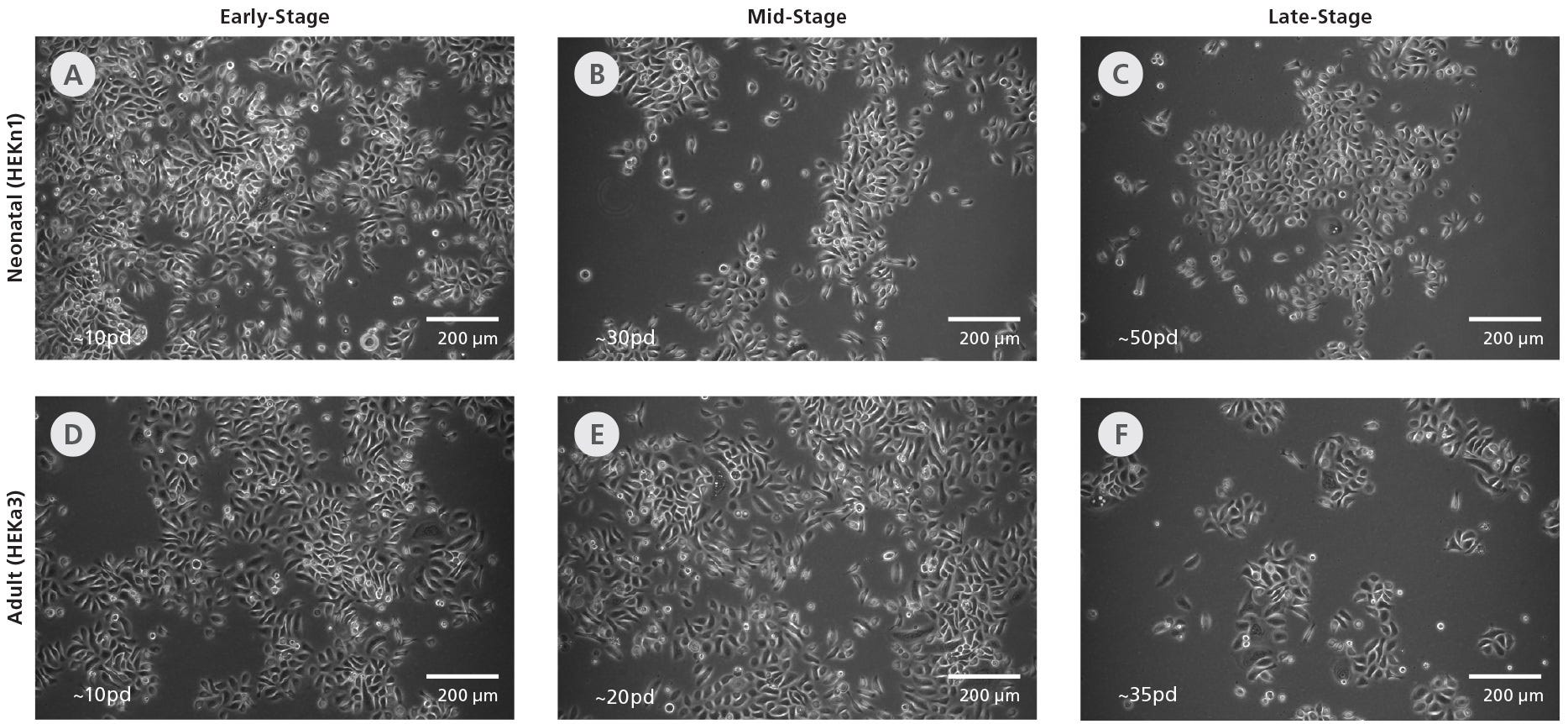
Figure 1. DermaCult™ Keratinocyte Expansion Medium Supports Long-Term Expansion of Primary Human Epidermal Keratinocytes
(A-C) Neonatal (HEKn1) and (D-E) adult (HEKa3) human epidermal keratinocytes (HEKs) cultured long-term in DermaCult™ Keratinocyte Expansion Medium maintain a cobblestone morphology throughout the culture period. The early-, mid-, and late-stages correspond to the number of population doublings reached. pd = population doublings. Scale bars = 200 μm. All images were taken using a 10X objective.

Figure 2. Primary Human Epidermal Keratinocytes Expanded in DermaCult™ Keratinocyte Expansion Medium Maintain High Growth Rates
(A) Neonatal and (B) adult HEKs cultured in DermaCult™ Keratinocyte Expansion Medium maintain a good proliferation rate over long-term culture, as observed by the population doublings /day at each passage. The neonatal cell lines were maintained until passage 12 while the adult cell lines were maintained until senescence.
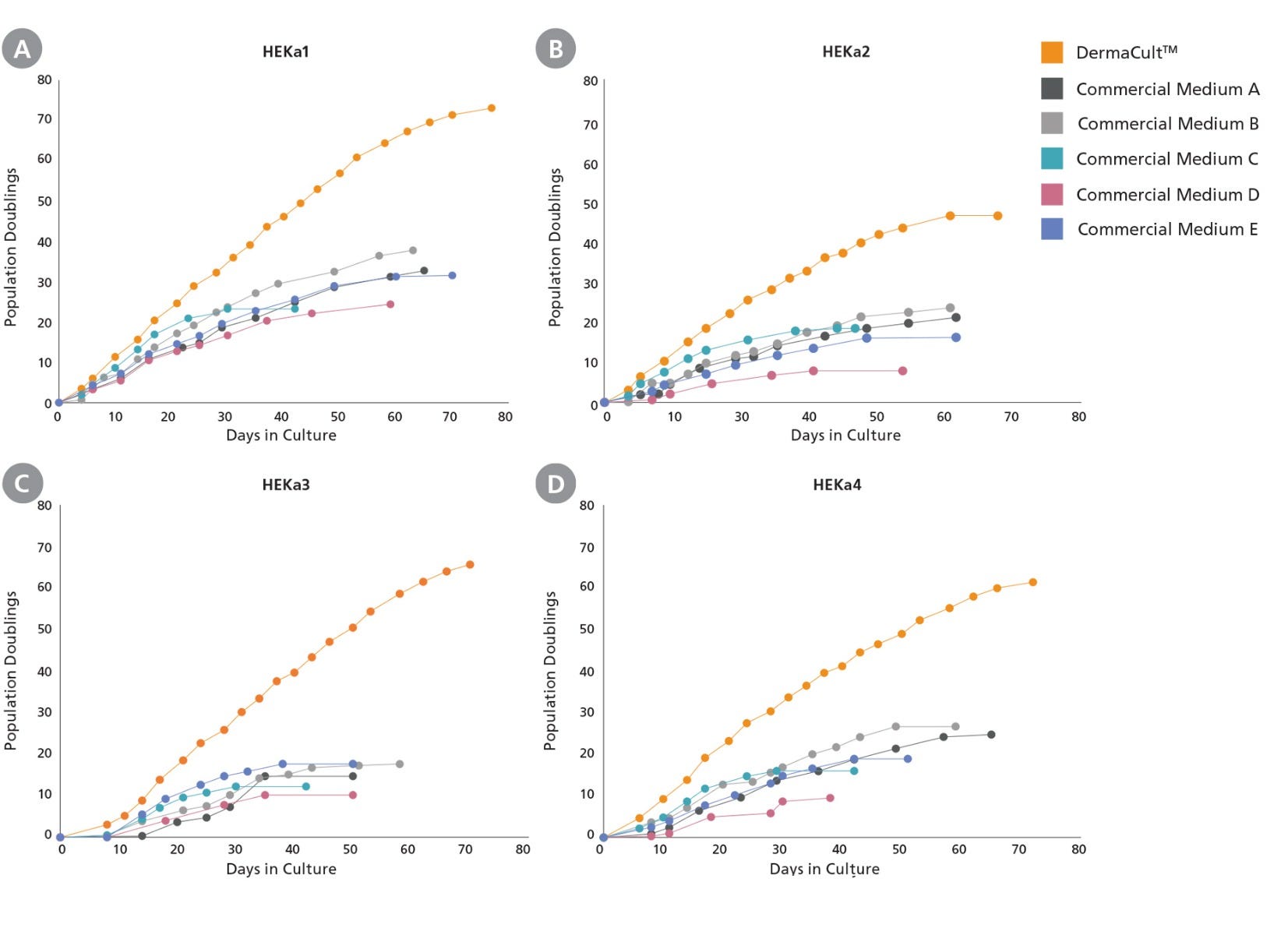
Figure 3. Primary Human Epidermal Keratinocytes Expanded in DermaCult™ Keratinocyte Expansion Medium Exhibit Increased Proliferation Rate Compared to Alternative Commercial Media
(A-D) Adult HEKs seeded and cultured in DermaCult™ Keratinocyte Expansion Medium show an increased proliferation rate and extended longevity compared to those cultured in 5 of the leading commercial media (n=4). Growth was assessed until senescence was reached.
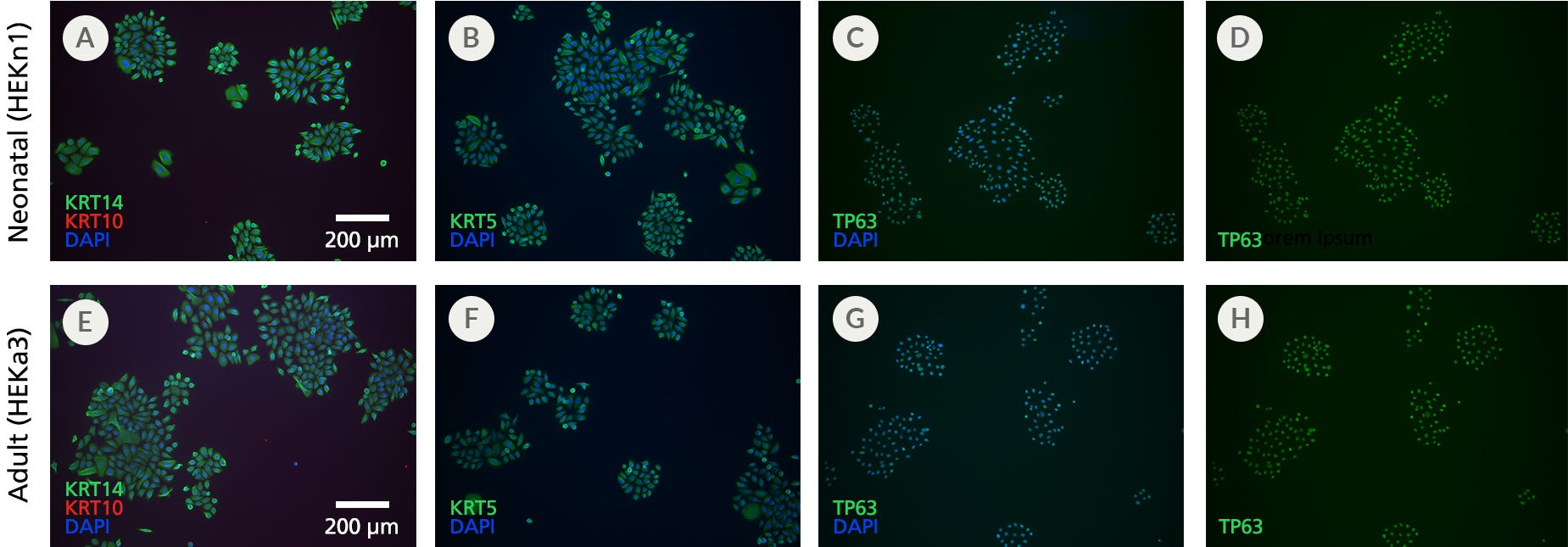
Figure 4. Primary Human Epidermal Keratinocytes Expanded in DermaCult™ Keratinocyte Expansion Medium Display Markers Characteristic of Basal Keratinocytes
(A-D) Neonatal and (E-H) adult HEKs maintained in DermaCult™ Keratinocyte Expansion Medium display characteristics of basal keratinocytes KRT14, KRT5, and TP63 (green) and absence of the suprabasal marker KRT10 (red), as observed through immunocytochemistry staining. Widespread co-labelling of the basal markers and the nuclear stain DAPI (blue) was observed. Scale bars = 200 μm. All images were taken using a 10X objective.
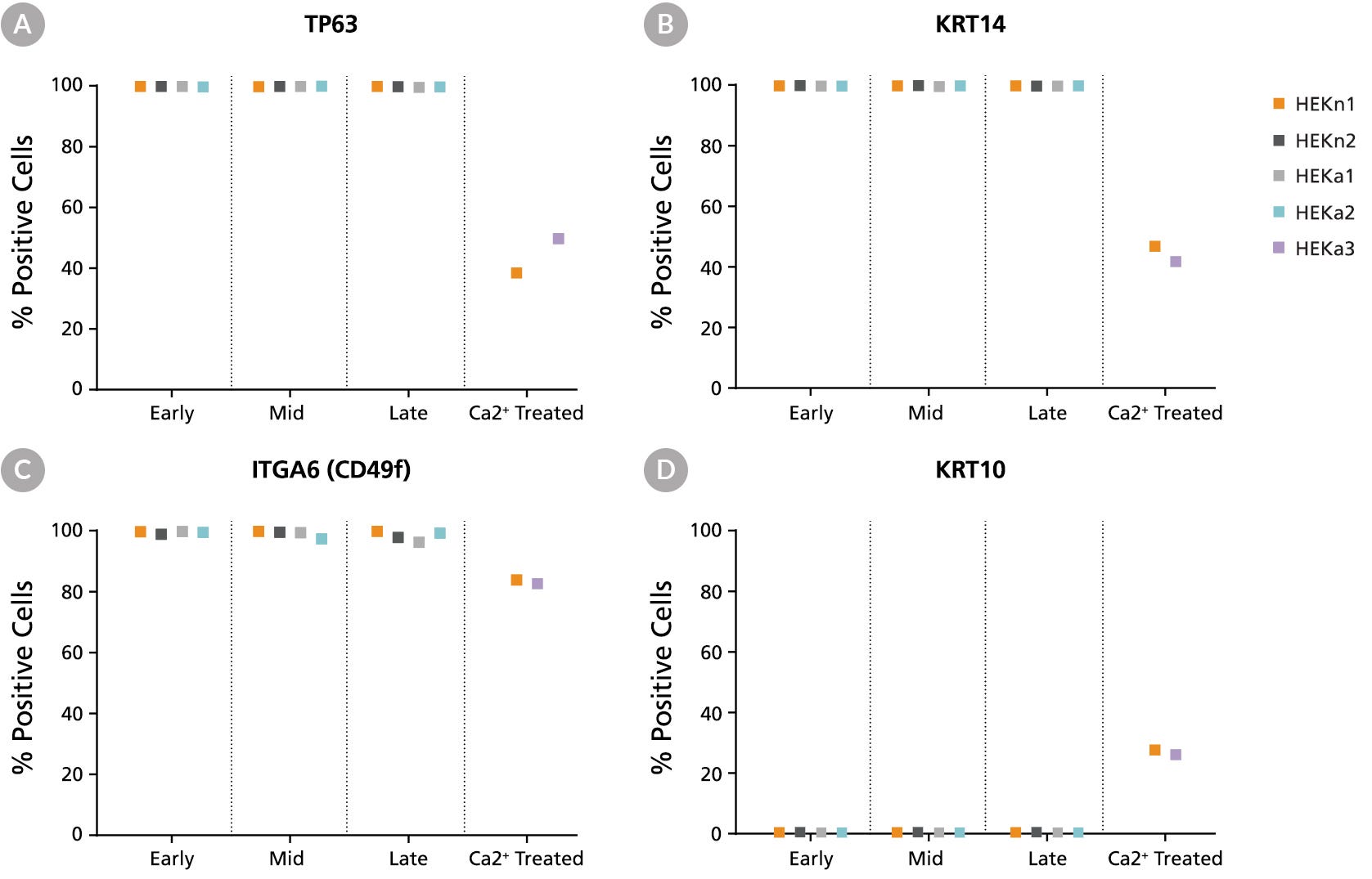
Figure 5. DermaCult™ Keratinocyte Expansion Medium Supports Expression of Key Protein Markers
Flow cytometry analysis of 2 neonatal (HEKn1, HEKn2) and 2 adult (HEKa1, HEKa2) HEK lines maintained in DermaCult™ Keratinocyte Expansion Medium was performed at early-, mid-, and late-stages. Ca2+ treated (differentiated) HEKs (HEKn1, HEKa3) were included as a control. A large percentage of the cells were positive for the basal markers (A) TP63, (B) KRT14, and (C) ITGA6 (CD49f) and negative for the differentiation marker (D) KRT10. In the Ca2+ treated HEKs, there is upregulation of KRT10 and downregulation of TP63, KRT14, and ITGA6.
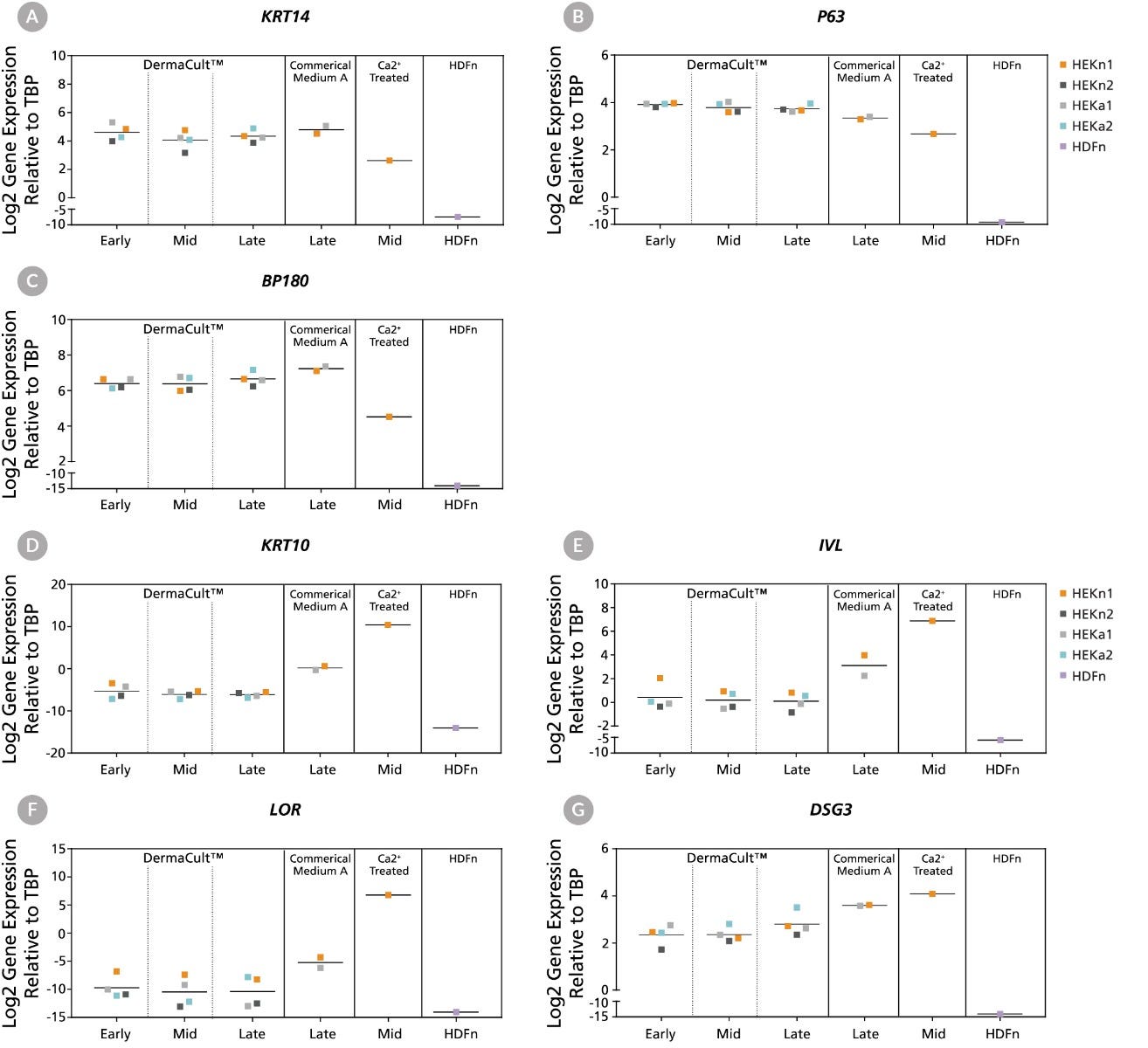
Figure 6. Human Epidermal Keratinocytes Maintained in DermaCult™ Keratinocyte Expansion Medium Display Gene Expression Patterns Characteristic of Proliferating Keratinocytes
Gene expression profiles of 2 neonatal and 2 adult HEKs maintained in DermaCult™ Keratinocyte Expansion Medium analysed by RT-qPCR at early-, mid-, and late-stages shows presence of key basal keratinocyte markers. HEKs maintained in Commercial Medium A, Ca2+ treated HEKs (differentiated), and neonatal human dermal fibroblasts (HDFn) were included as controls. HEKs maintained in DermaCult™ Keratinocyte Expansion Medium express basal markers (A) KRT14, (B) P63, and (C) BP180. This is comparable to HEKs in Commercial Medium A and greater than the Ca2+ treated HEKs. HEKs maintained in DermaCult™ Keratinocyte Expansion Medium show low levels of expression of the differentiation markers (D) KRT10, (E) IVL, (F) LOR, and (G) DSG3. These markers are upregulated in the Ca2+ treated HEKs. All expression levels are normalised to the housekeeping gene TBP.
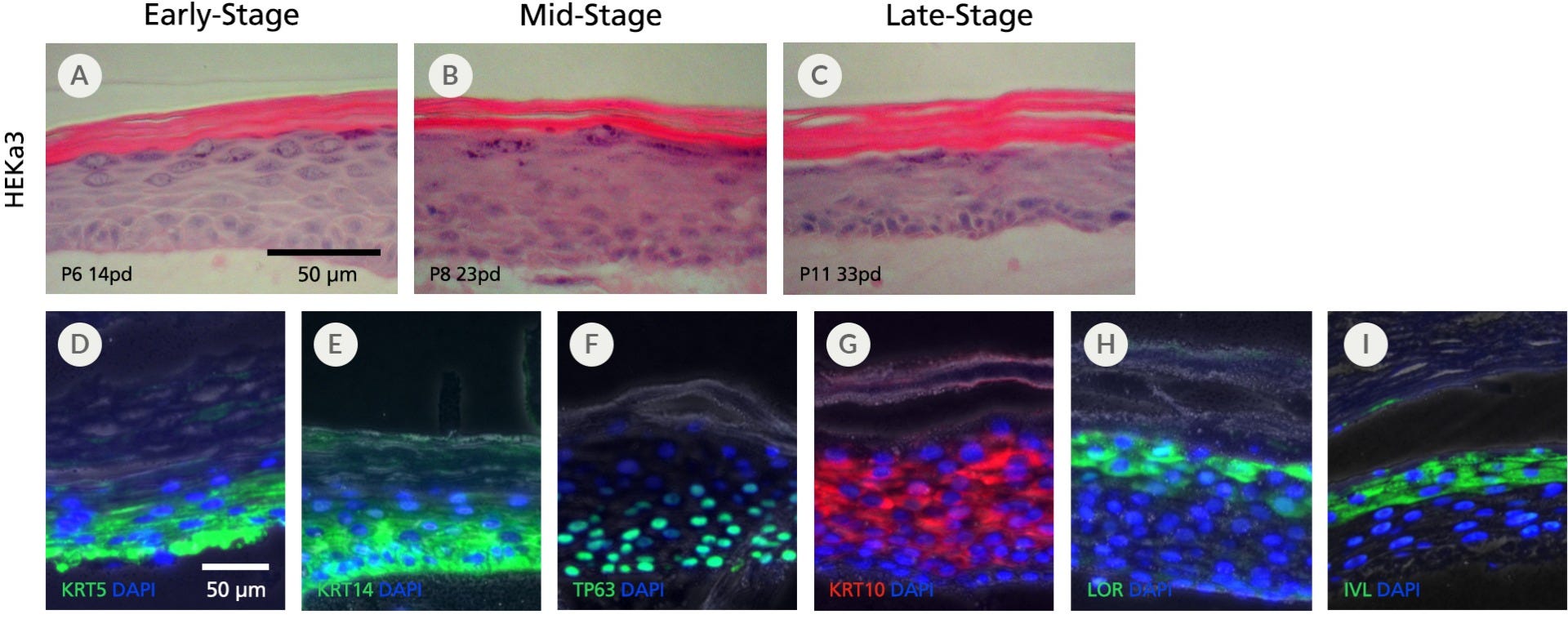
Figure 7. Human Epidermal Keratinocytes Maintained in DermaCult™ Keratinocyte Expansion Medium Differentiate at the Air-Liquid Interface
An adult keratinocyte line (HEKa3) cultured in DermaCult™ Keratinocyte Expansion Medium retains the ability to differentiate at the air-liquid interface (ALI) at (A) early-, (B) mid-, and (C) late-stages. H&E staining reveals a multi-layered structure with cuboidal basal cells and a clear cornified layer. The differentiated HEKs display protein markers characteristic of in vivo keratinocytes, including the expression of (D) KRT5, (E) KRT14, and (F) TP63 at the basal layers and (G) KRT10, (H) LOR, and (I) IVL at the suprabasal layers. Protein expression was visualized by immunohistochemistry. Fluorescent and phase contrast photos are overlaid. Scale bars = 50 μm. All images were taken using a 20X objective.
Gangatirkar et al (2007) Establishment of 3D organotypic cultures using human neonatal epidermal cells. Nature Protocols 2: 178:87.

Figure 8. DermaCult™ Keratinocyte Expansion Medium Supports the Derivation of Human Epidermal Keratinocytes from Skin Tissue Samples
Dissociated cells from a donor skin tissue sample were seeded into DermaCult™ Keratinocyte Expansion Medium (A) without and (B) with collagen. Representative images show a typical cobblestone morphology in both conditions. HEKs seeded into DermaCult™ Keratinocyte Expansion Medium without collagen had a lower attachment (P0 d9, Figure A-left), but were able to expand and recover upon passaging (P1 d5, Figure A-right). HEKs seeded on a plate without collagen also developed more into colonies, while those on collagen were more dispersed. Scale bars = 200 μm. Images were taken using a 4X objective.
请在《产品说明书》中查找相关支持信息和使用说明,或浏览下方更多实验方案。
Thank you for your interest in IntestiCult™ Organoid Growth Medium (Human). Please provide us with your contact information and your local representative will contact you with a customized quote. Where appropriate, they can also assist you with a(n):
Estimated delivery time for your area
Product sample or exclusive offer
In-lab demonstration
扫描二维码或搜索微信号STEMCELLTech,即可关注我们的微信平台,第一时间接收丰富的技术资源和最新的活动信息。
如您有任何问题,欢迎发消息给STEMCELLTech微信公众平台,或与我们通过电话/邮件联系:400 885 9050 INFO.CN@STEMCELL.COM。
在线联系

